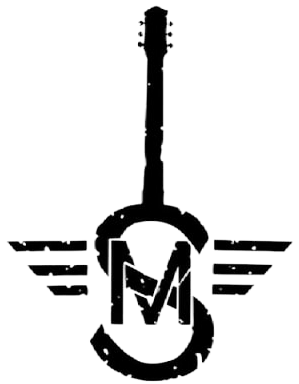What is the Third Estate Everything quote?
Therefore, what is the Third Estate? Everything; but an everything shackled and oppressed. What would it be without the privileged order? Everything, but an everything free and flourishing.
What is the 3rd Estate French Revolution?
In early modern Europe, the ‘Estates’ were a theoretical division of a country’s population, and the ‘Third Estate’ referred to the mass of normal, everyday people. They played a vital role in the early days of the French Revolution, which also ended the common use of the division.
Who led the Third Estate?
The leader of the third estate who led the French Revolution was Maximilien Robespierre. Robespierre was a member of the Jacobin Club, a revolutionary organization, and later gained roles in the various assemblies set up by French revolutionaries to govern the country after the fall of monarchy.
What is the Third Estate sieyes summary?
In What is the Third Estate? Sieyès argued that commoners made up most of the nation and did most of its work, they were the nation. He urged members of the Third Estate to demand a constitution and greater political representation.
What did the 3rd estate want?
Estates General
The Third Estate wanted greater representation and greater political power to address issues of inequality. After weeks of dissent, no agreement was reached and the meeting of the Estates-General was disbanded.
Who is considered the second estate?
The Second Estate was a small group in 18th century French society comprising the noble or aristocratic orders. Its members, both male and female, possessed aristocratic titles such as Duc (‘Duke’), Comte (‘Count’), Vicomte (‘Viscount’), Baron or Chevalier.
What is the 1st 2nd 3rd and 4th estate?
The first estate was the clergy, the second estate was the nobility, the third estate was the commoners and bourgeois, and the fourth estate was the press. The first three estates were established in the French Revolution, while the fourth estate was a term first coined in the early to mid-1800s.
Who were the 3 estates of France?
This assembly was composed of three estates – the clergy, nobility and commoners – who had the power to decide on the levying of new taxes and to undertake reforms in the country. The opening of the Estates General, on 5 May 1789 in Versailles, also marked the start of the French Revolution.
What was the 1st 2nd and 3rd estate?
France under the Ancien Régime (before the French Revolution) divided society into three estates: the First Estate (clergy); the Second Estate (nobility); and the Third Estate (commoners).
Who wrote the Third Estate?
Emmanuel Joseph SieyèsWhat Is the Third Estate? / Author
pamphlet written and published in Paris in 1789 by Abbé Emmanuel Joseph Sieyès, a “little-known and less-regarded provincial French priest.” Its title was “Qu’est-ce que le Tiers-État?” — or in English, “What is the Third Estate?” More elaborate by far than the trifold brochure we think of as pamphlets today, it was …
Which were the two factions in the Third Estate?
Third Estate, French Tiers État, in French history, with the nobility and the clergy, one of the three orders into which members were divided in the pre-Revolutionary Estates-General.
Why was the Third Estate so angry?
King Louis XVI, aware of the injustices of the French tax policy, tried to reform the tax code to make it more fair, but was repeatedly thwarted by the overrepresented nobles and clergy. This angered the Third Estate, which refused to vote in the Estates General, and formed instead the National Assembly.
Who was in the 1st estate?
the clergy
The First Estate was the clergy, who were people, including priests, who ran both the Catholic church and some aspects of the country. In addition to keeping registers of births, deaths and marriages, the clergy also had the power to levy a 10% tax known as the tithe.
What are the 1st 2nd 3rd 4th and 5th Estates?
What is the 4th and 5th estate?
Making reference to the medieval concept of “three estates of the realm” (clergy, nobility, and commoners) and to a more recently developed model of “four estates”, which encompasses the media, Nayef Al-Rodhan introduces the weblogs (blogs) as a “fifth estate of the realm”.
What is the 1st 2nd 3rd and 4th Estate?
Who was in the 2nd estate?
The Second Estate consisted of the nobility of France, including members of the royal family, except for the King. Members of the Second Estate did not have to pay any taxes. They were also awarded special priviliges, such as the wearing a sword and hunting.
What are the 1st 2nd 3rd and 4th estates?
What is the 1st estate?
The First Estate was the clergy, who were people, including priests, who ran both the Catholic church and some aspects of the country. In addition to keeping registers of births, deaths and marriages, the clergy also had the power to levy a 10% tax known as the tithe.
Who abolished slavery in France?
It was in the office of minister François Arago in the Hôtel de la Marine that the decree to abolish slavery in the French colonies was signed on 27 April 1848 in Paris. Victor Schœlcher, an ardent defender of human rights, was the man behind this historic date and decision.
What were the 3 Estates in French society?
What is the Third Estate written by?
What rights did the Third Estate not have?
They did not have the right to meet as a group, draft grievances, or vote (except in isolated individual instances) in the preparatory elections.
Was the Third Estate treated unfairly?
Regardless of their property and wealth, members of the Third Estate were subject to inequitable taxation and were politically disregarded by the Ancien Régime. This exclusion contributed to rising revolutionary sentiment in the late 1780s.
